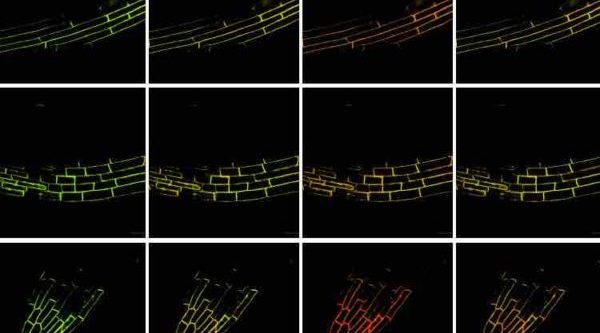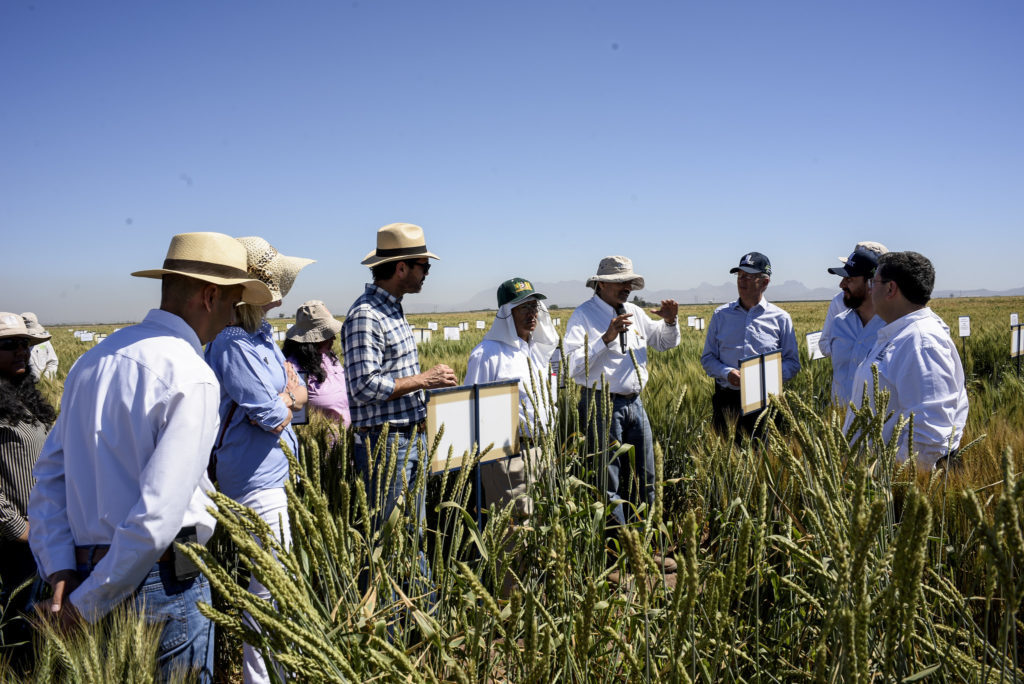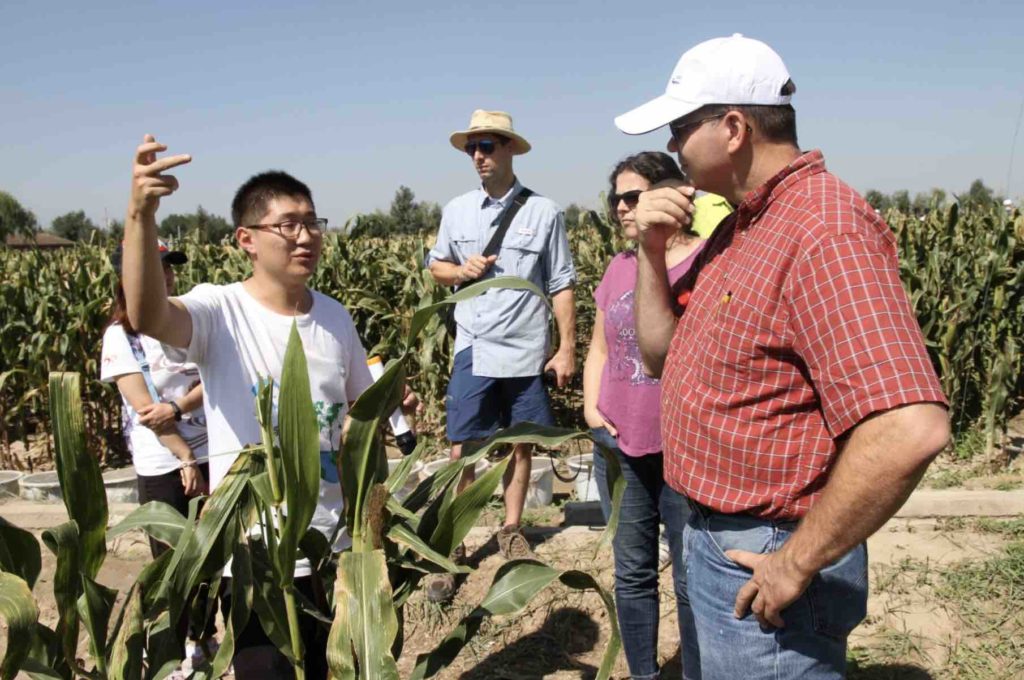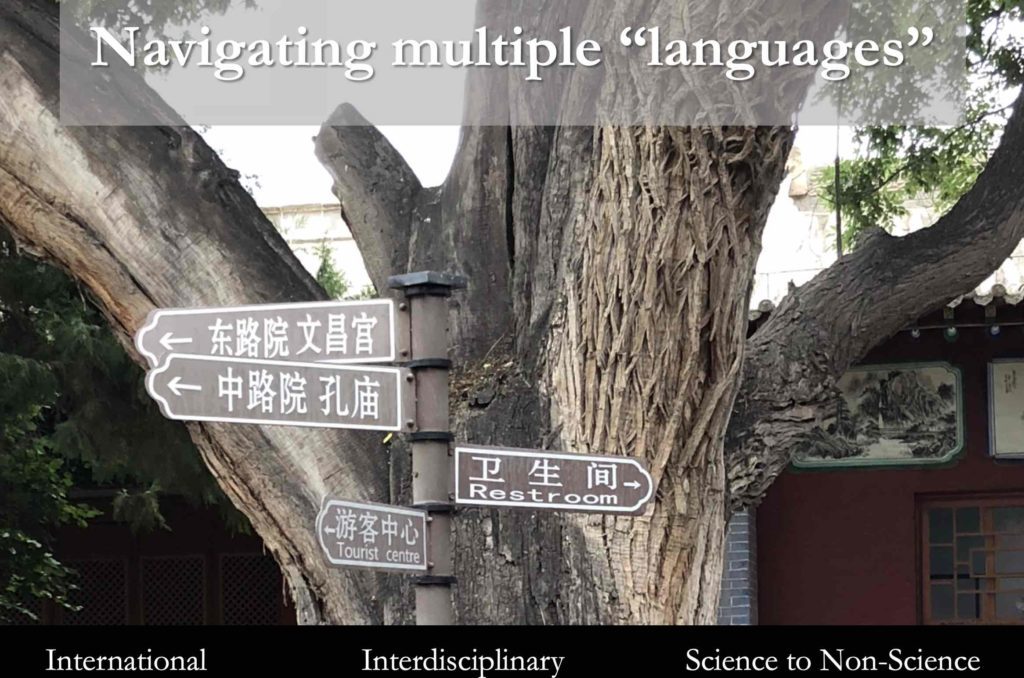
They are tiny signalling molecules that play important roles in many processes in living organisms. Researchers have developed a biosensor method for phosphatidic acid, an important messenger substance in plants.

They are tiny signalling molecules that play important roles in many processes in living organisms. Researchers have developed a biosensor method for phosphatidic acid, an important messenger substance in plants.

By W.J Davies and Jianbo Shen
Lancaster Environment centre, Lancaster University, Lancaster, LA1 4YQ. The UK and National Academy of Agriculture Green Development, Centre for Resources, Environment, and Food Security, China Agricultural University, Beijing, 100193, China.
Fourth post of our “Global Collaboration” series
In early 2019, the EAT-Lancet Commission on Healthy Diets from Sustainable Food Systems produced its first report. The Commission report addressed our need to effectively ‘feed a growing global population with a healthy diet while also defining the kinds of sustainable food systems that will minimise damage to our planet’. While it is clear that our current food and farming practices threaten both human and planetary health, the Commission concludes ‘that Global Food Systems can provide win-win diets to everyone by 2050 and beyond. However, this will require nothing less than a Great Food Transformation’
Despite a growing realisation of the magnitude of the challenges that are a part of such transformations, in most societies, progress is slow. Plants Science has much to contribute to enable better diet quality, increase crop productivity, enhance environmental sustainability and create new products and manufacturing processes (see example) but cannot alone bring about all of the required transformations.
For the required changes in government policies and in human behaviour, we must be able to convince people of both the nature and magnitude of the growing threats to human and planetary health as well convince all sectors of society to adopt as targets for the future, such as the UN Sustainability Goals. A range of actions is required from both organisations and individuals working at all scales.
Effective knowledge exchange (KE) mechanisms between scientists and food producers is recognised as being key to delivery of many changes in practice required within the framework defined above. Change is perhaps more easily achieved at the industrial farming scale where new genotypes and changes to farming systems are commonly produced and accepted. A wide range of publications means that practitioners can regularly see that these innovations can have significant effects on food availability and quality. However, most food in the world is still produced by smallholders and effective examples at scale of KE between science and this community are less common.
In China, there is an urgent need to address issues of food access and availability, food quality and safety and the environmental impact of agriculture in a society where diets are changing as the economy grows. As part of China’s successful green revolution over the last 50 years, enormous increases in food production have been achieved largely as a result of advances in both plant breeding and agronomy Very large increases in the usage of fertiliser, agrochemicals and particularly of water have increased productivity but all of this has been very damaging to the environment in many regions. Commonly, both quality and safety of food are significant issues in China due to both contamination with agrochemicals and as a result of food fraud.
Nevertheless some positive changes are underway in the food system with increased consumption of fruit and organic vegetables in Chinese diets but even here extra water use is often required and this is certainly the case also as a result of increasing consumption of meat in the diets of increasing numbers of people. Excess water consumption has reduced water tables in many regions of China (and other important food production regions). Reduction to dangerously low levels is leading to desertification in some regions with real threats to capacity for sustained production by farmers in these and other regions. Excess fertiliser use has resulted in many high profile pollution problems in surface waters which are valuable both for agriculture and for cultural tourism.

The introduction by scientists at China Agriculture University of ‘Science and Technology Backyards’ (STBs) is one very innovative approach to helping smallholders in China transform agriculture to respond to the challenge of greater ‘Ecological Civilization’, as set out in recent years by the Chinese Government. Using such an approach to exploit recent advances in plant and crop science is very much in tune with the agenda of EAT-Lancet Commission. In increasing numbers of communities across China, agricultural scientists living in villages among farmers to achieve yield and economic gains sustainably. The aims of this knowledge exchange programme are to advance participatory innovation and technology transfer and garner public and private support for these innovations. The approach has identified multifaceted yield-limiting factors involving agronomic, infrastructural, and socioeconomic conditions and interventions at the personal and community level are transforming peoples’ lives.
Due to past experiences of famine and political instability, China’s government has made grain production and food security a top priority for the nation. By the 2000s, after years of food shortage, China finally produced enough food annually to feed its enormous population. Now, China has set a new target of green growth in future grain production. This target involves high efficiency in resource use with reduced environmental risk. Novel developments in agronomy enable maintenance of a relatively high grain yield on a regional scale. To help deliver on these targets, China is also developing strong policy incentives for environmental protection and green growth in grain production. Going forward, it is planned that Chinese agriculture will continue to put into practice a vision of innovative, coordinated rural revitalization and green development. The science and technology backyard (STB) model could provide an effective approach to realize the green development of agriculture, as it aims to close yield gaps in China by empowering smallholder farmers through integrating efforts of researchers, farmers, the government, and agro-enterprises.
Success at scale in improving sustainable resource use and increasing grain production in China will enhance the country’s food security while decreasing poverty and the environmental footprint of food production, thereby contributing to the global goal of sustainable development. To meet new demands of Chinese agriculture in a new era, as well as for promoting further implementation of United Nations (UN) Sustainable Development Goals (SDGs), the National Academy of Agriculture Green Development and the International School of Agriculture Green Development were launched by China Agricultural University in July, 2018. A national strategy of Agricultural Green Development, issued by the central Chinese Government is likely to provide valuable understanding and new production practices, particularly for smallholders in other developing countries that are already facing or will soon face dietary and environmental challenges similar to those currently faced by China.

You often hear “scientists just need to communicate better”. But communication is a two-way street. You can talk all you like but if no one is listening, then it’s not going to get very far.

By Mathew Reynolds, Wheat Physiologist at, CIMMYT
First post of our “Global Collaboration” series
Wheat is the most widely grown crop in the world, currently providing about 20 percent of human calorie consumption. However, demand is predicted to increase by 60 percent within just 30 years, while long-term climate trends threaten to reduce wheat productivity, especially in less developed countries.
For over half a century, the International Wheat Improvement Network (IWIN), coordinated by CIMMYT, has been a global leader in breeding and disseminating improved wheat varieties to combat this problem, with a major focus on the constraints of resource poor farmers.

Two complementary networks — the Heat and Drought Wheat Improvement Consortium (HeDWIC) and the International Wheat Yield Partnership (IWYP) — are helping to meet the future demand for wheat consumption through global collaboration and technological partnership.
By harnessing the latest technologies in crop physiology, genetics and breeding, network researchers support the development of new varieties that aim to be more climate resilient, in the case of HeDWIC and with higher yield potential, in the case of IWYP.
These novel approaches to collaboration take wheat research from the theoretical to the practical and incorporate science into real-life breeding scenarios. Methods such as screening genetic resources for physiological traits related to radiation use efficiency and identifying common genetic bases for heat and drought adaptation are leading to more precise breeding strategies and more data for models of genotype-by-environment interaction that help build new plant types and experimental environments for future climates.
IWYP addresses the challenge of raising the genetic wheat yield potential of wheat by up to 50 percent in the next two decades. Achieving this goal requires a strategic and collaborative approach to enable the best scientific teams from across the globe to work together in an integrated program. TheIWYP model of collaboration fosters linkages between ongoing research platforms to develop a cohesive portfolio of activities that maximizes the probability of impact in farmers’ fields IWYP research uses genomic selection to complement the crossing of complex traits by identifying favorable allele combinations among progeny. The resulting products are delivered to national wheat programs worldwide through the IWIN international nursery system.
Recently, IWYP research achieved genetic gains through the strategic crossing of biomass and harvest index — source and sink — an approach that also validates the feasibility of incorporating exotic germplasm into mainstream breeding efforts.
In the case of HeDWIC, intensified — and possibly new — breeding strategies are needed to improve the yield potential of wheat in hotter and drier environments. This also requires a combined effort, using genetic diversity with physiological and molecular breeding and bioinformatic technologies, along with the adoption of improved agronomic practices by farmers. The approach already has proof of concept in the release and adoption of three heat and drought tolerant lines in Pakistan.
It is imperative to build increased yield and climate-resilience to into future germplasm in order to avoid the risk of climate-related crop failure and to maintain global food security in a warmer climate. Partnerships like HeDWIC and IWYP give hope to meeting this urgent food security challenge.
Further readings:
https://www.hedwic.org/resources.htm
https://royalsocietypublishing.org/doi/full/10.1098/rspb.2012.2190
An economist’s perspective on plant sciences: Under-appreciated, over-regulated and under-funded

Picture: Dr. Felix Fritschi, University of Missouri, while talking with China Agricultural University graduate students
Authors: Shannon K. King1,4, Jon T. Stemmle2, Robert E. Sharp3,4
1Department of Biochemistry, 2School of Journalism, 3Division of Plant Sciences, and 4Interdisciplinary Plant Group, University of Missouri, Columbia, USA
Second post of our “Global Collaboration” series
Earning a graduate degree in the life sciences is all about preparing students to become productive and competitive in today’s scientific field; ensuring they are at the cutting edge of technology and knowledge. However, one aspect of graduate education that is seemingly overlooked is extending outside of the lab and learning how to become a scientist in the global community. This oversight is something that scientists at the University of Missouri and China Agricultural University are working to combat.
In August 2018, faculty, graduate students and post-docs from both universities came together in Beijing for a workshop to discuss scientific areas of expertise ranging from wetland ecology to crop modeling. This allowed attendees to practice collaborating with other scientists internationally and across disciplines.

One of the key skills the graduate students developed during the workshop was how to communicate science in multiple languages. The students had to overcome the challenges of communicating science in English and Chinese along with explaining it to scientists outside of their disciplines and then take those experiences and turn them into videos, stories and blog posts that the public could enjoy.
Needless to say, the students quickly learned that not only is science communication difficult, but the degree of difficulty rises exponentially when trying to communicate with an audience outside of your native language and discipline. To tackle the language barrier, students avoided jargon and slowed their speaking pace to clearly articulate their points. Many times, the students from the two universities took the breaks between sessions to really talk to each other about the presentation content to solidify what the takeaways were. It was these informal discussions that led to very productive conversations. Students also pointed out the similarities and differences between their projects, allowing for bridges to be built between what would normally be very different fields.
Another part of this workshop helped the students to learn how to better engage with the general public. While in China, the Missouri graduate students performed journalistic tasks in order to demonstrate what they learned and experienced during the workshop. They took video footage, interviewed workshop attendees and conceptualized how to turn all of that content into stories. When the Missouri students returned home, they began the process of creating content about the China trip. They had to make sure all videos, blogs, and articles were easily understandable to a non-science audience since everything would be eventually posted online at https://rootsindrought.missouri.edu/ and on Youtube.
Through this experience, University of Missouri students were able to take what they had learned in theory and put it into practice. These skills will help them to have a unique advantage compared with their peers and help them as they move into their academic and professional careers.
There is no question that the scientific field is becoming more global and the general public is becoming increasingly skeptical of science. This makes it critical that we begin developing graduate programs to incorporate experiences that allow students to engage in the world outside the lab and learn to communicate why their science is beneficial to society, both at home and abroad.
Supported by NSF Plant Genome Program Grant no. 1444448 to R.E.S. and a 111 Program grant to Prof. Shaozhong Kang, China Agricultural University